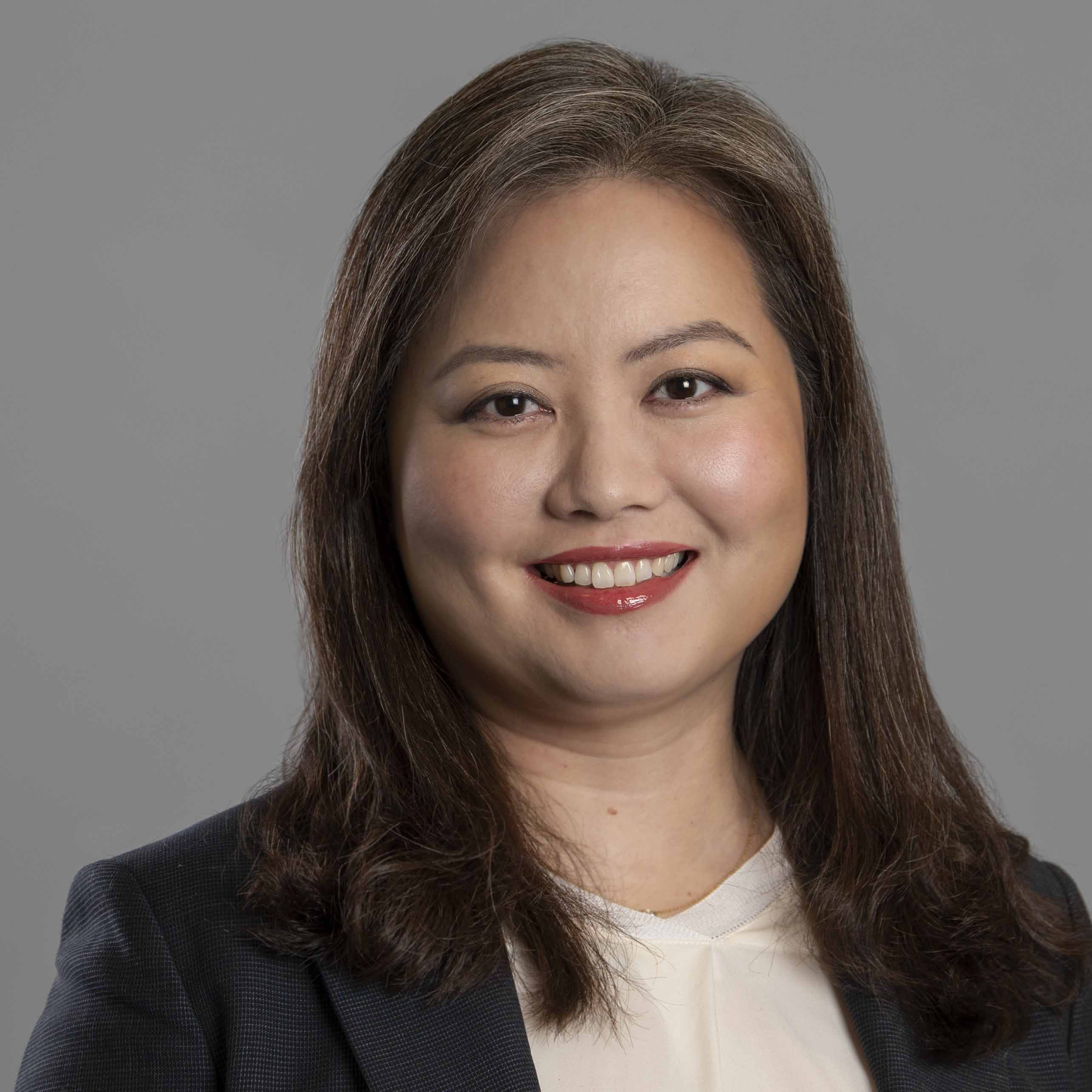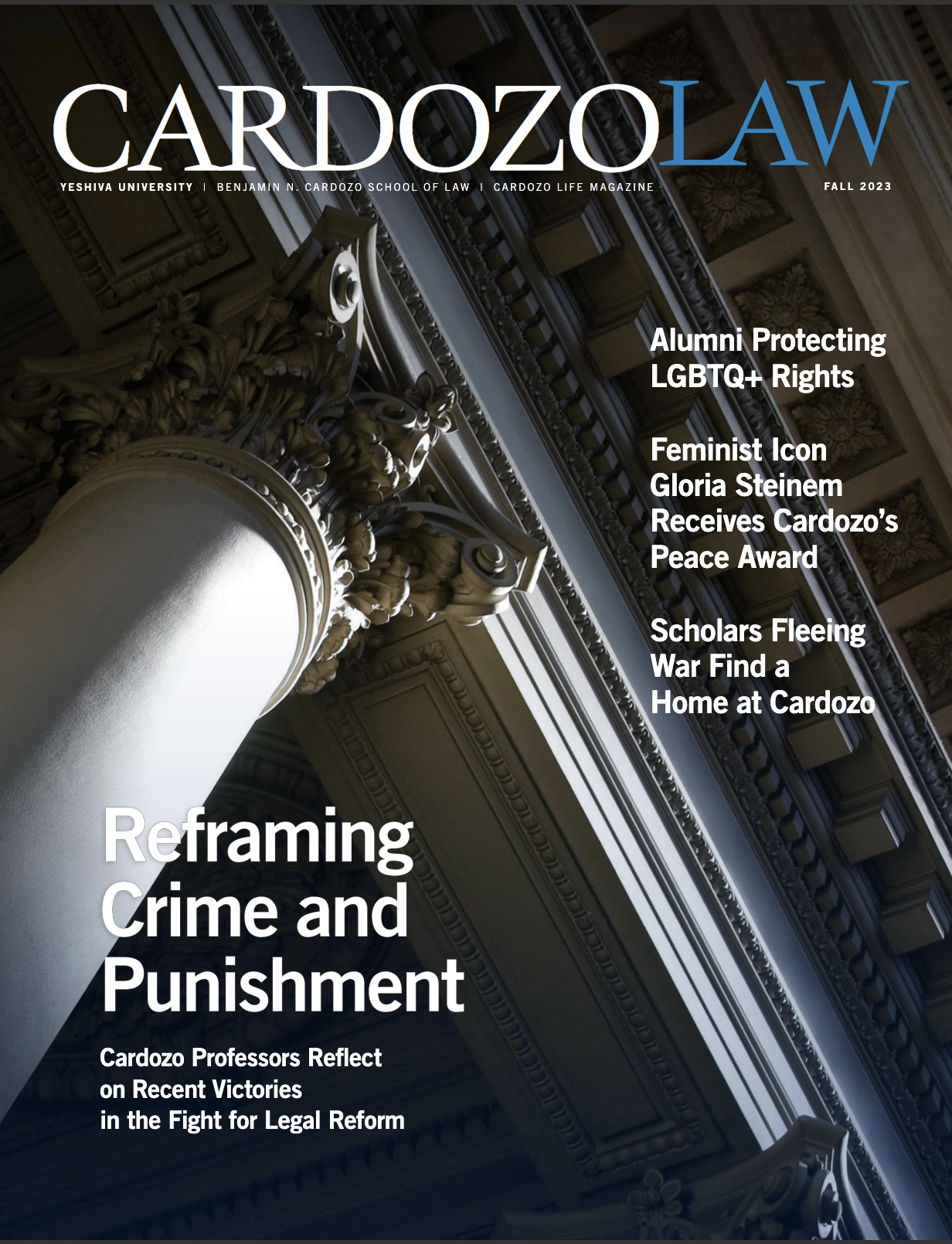
MESSAGE FROM DEAN MELANIE LESLIE

Our professors are renowned scholars and practitioners—experts who shape the study and practice of law. I'm proud to share a sampling of their recent scholarship with you. The energy and engagement exhibited by our faculty continue to make Cardozo a leader in legal education.

DEAN MELANIE LESLIE
Melanie Leslie became dean of Cardozo Law School on July 1, 2015. She is the first Cardozo Law graduate and the first woman to hold the position.
Dean Leslie was the driving force behind a number of important initiatives at the intersection of law, technology, intellectual property, and business, including The FAME Center for fashion, art, media and entertainment law, which prepares students to work in the creative industries through its extensive curricular offerings; The Cardozo/Google Patent Diversity Project, which seeks to increase the number of women and minority innovators receiving patents; The Blockchain Project, which offers classes and symposia on blockchain and regulation; The Center for Rights and Justice; and The Center for Real Estate Law and Policy.
A Cardozo professor since 1995, Dean Leslie is a leading scholar in trusts & estates, fiduciary obligations and nonprofit governance. Courses taught include Property, Trusts and Estates, Nonprofit Governance, and Evidence. She has been presented the “Best First-Year Professor” award by three graduating Cardozo classes. She served as Cardozo’s Vice Dean from 2014-15.
Dean Leslie is a prolific scholar whose work has been published by the NYU Law Review, Boston College Law Review, Florida Law Review, William & Mary Law Review, Georgetown Law Journal, and Indiana Law Journal, among others. She is the co-author of a leading casebook, Estates and Trusts, Cases and Materials, as well as Concepts and Insights: Trusts and Estates. Dean Leslie has been a Visiting Associate Professor of Law at New York University School of Law, and a Visiting Professor of Law at Columbia Law School. She has served on the NY State Bar and NYC Bar Joint Committee on the Uniform Trust Code, as a Legal Fellow of the American College of Trusts and Estates Counsel (ACTEC), and on the executive committees of the AALS Sections on Trusts & Estates and Nonprofits and Philanthropy.
Prior to joining the Cardozo Law faculty she clerked for Justice Gary S. Stein of the New Jersey Supreme Court and practiced commercial litigation at Debevoise & Plimpton, Cleary Gottlieb Steen & Hamilton, and McCarter & English.
A native of Las Vegas, Dean Leslie received her B.A. in Theater from the University of Oregon, with honors, before moving to New York City, where she spent several years working as a professional actor and vocalist. She then received her J.D. from Cardozo Law magna cum laude in 1991, where she was the Executive Editor of the Cardozo Law Review.

Lindsay Nash
The Immigration Subpoena Power (Forthcoming 2024)
"For over a century, the federal government has wielded the immigration subpoena power in darkness, forcing private citizens, sub-federal governments, and others to help it detain and deport. Thus, in an era in which local information has become central to immigration enforcement, the immigration subpoena power raises urgent questions about when, how, and with what constraints the federal government uses this power writ large. This article provides the first comprehensive account of the immigration subpoena power. Drawing upon previously undisclosed agency records and an original dataset reflecting thousands of subpoenas issued nationwide, this article shows how Immigration and Customs Enforcement now deploys a power initially created to enhance racial exclusion at the border to reach deep into our communities and people’s lives. These findings, this article argues, shed vital light on the immigration subpoena regime.”

Matthew Wansley (with Mark Lemley)
Coopting Disruption
“Our economy is dominated by five aging tech giants – Alphabet, Amazon, Apple, Meta, and Microsoft. In the last twenty years, no company has commercialized a new technology in a way that threatens them. Why? We argue that the tech giants have learned how to coopt disruption, we show how three important new technologies – artificial intelligence, virtual reality, and automated driving – are being coopted right now, and we propose reforms that would make it harder to coopt disruption.”

Rebecca Ingber
The Insidious War Powers Status Quo
This Essay highlights two features of modern war powers that hide from public view decisions that take the country to war: the executive branch’s exploitation of interpretive ambiguity to defend unilateral presidential authority, and its dispersal of the power to use force to the outer limbs of the bureaucracy.

Emmanuel Arnaud
Colonizing by Contract
"In this Article, I map out the general contours of what I term the “territorial criminal legal system” and present Puerto Rico as a case study to unearth the implications of plenary power for criminal adjudication. In broad strokes, that system consists of mechanisms that allow Congress to intervene in local criminal affairs to a far greater degree than it could in any State. At the same time, the territorial criminal legal system imposes administrative constraints on local prosecutorial actions and poses an existential threat to the existence of local criminal systems. Sharing insights from over a dozen interviews with prosecutors, defense attorneys, Puerto Rican academics, and judges working in the criminal legal system in Puerto Rico, I uncover how federal prosecutors circumvent protections embedded in Puerto Rican local law and constitutional text (like the right to bail, other robust pre-trial protections, and even the prohibition of the death penalty)."

Andrea Schneider (with Abigail Bogli and Hannah Chin)
The New Glass Ceiling
“In every sector of the workforce, there is evidence of gender discrimination, inequality, and bias. Not surprisingly, the legal profession is not immune. Law school graduates in the 1990s, including one of this Article’s authors, were told that it was only a matter of time before equality in all areas of the law would occur. This promise has yet to be realized. Through new and detailed data, this Article focuses on correcting the narrative that equality in the legal profession has been achieved. To understand potential levers of change, we collected data on women’s representation, leadership roles, and compensation….Yes, the numbers are dismal. But firms vary, and they vary widely. Law students should know to ask key questions to determine these differences …and better understand what their future experience might entail.”

Luís Calderón Gómez
Taxation’s Limits
“This Article develops a novel normative theory that rationalizes and justifies our current tax exemption regime. Rather than conceiving exemptions as subsidies or individual deviations from a normative base explainable by ordinary politics, the Article argues that exemptions are best understood as mapping the “limits” of tax. These limits are neither arbitrary nor merely a collection of individual subsidies to favored activities; rather, they are best seen as being reflective of deeper collective socio-political judgments about the scope of the State and the public sphere.”

Young Ran (Christine) Kim
Taxing Litigation Finance (Forthcoming 2024)
“This paper proposes a customized multi-factor analysis to identify the true nature of litigation financing transactions and impose proper tax treatment. The bedrock of this approach is the concept of tax ownership, which, in the context of litigation financing, can be streamlined into two key factors: economic risk and legal control of the claim. By emphasizing the legal control factor, this proposal has the potential to combat the agency problems inherent in litigation finance without hindering market growth. As the industry continues to develop, this paper calls on tax policymakers and other regulatory bodies to reduce the current tax uncertainty by integrating the factors discussed herein when issuing future guidance and imposing disclosure obligations.”

Jacob Noti-Victor
Regulating Hidden AI Authorship (Forthcoming 2024)
"With the rapid emergence of high-quality generative artificial intelligence (AI), some have advocated for mandatory disclosure when the technology is used to generate new text, images, or video. But the precise harms posed by nontransparent uses of generative AI have not been fully explored. While the use of the technology to produce material that masquerades as factual is clearly deceptive, this Article focuses on a more ambiguous area of harm: the consumer's general interest in knowing whether works of art or entertainment were created using generative AI technology. The Article also investigates ways existing law might help facilitate disclosure of the use of generative Al."

Michael Pollack (with Matthew Tokson)
Decentering Property in Fourth Amendment Law
“For the past several decades, privacy has been the primary conceptual foundation for Fourth Amendment search law. Yet privacy is no longer the sole determinant of Fourth Amendment protection, as the Supreme Court has recently added a property-based test to address cases involving physical intrusions on land or chattel. Further, given the ambiguity of the reasonable expectation of privacy test, a variety of influential judges and scholars have proposed relying primarily, or even exclusively, on property in determining the Fourth Amendment’s scope. This Article exposes the overlooked challenges and flaws of a property-centered Fourth Amendment. Pushing past simple hypotheticals, it examines the complications of real-world property law and demonstrates its complexity and uncertainty. It also explores the malleability of property rights and reveals how governments can manipulate them in order to facilitate pervasive surveillance.”

Kyron Huigens
A Model Defense of Due Process Balancing (Forthcoming 2024)
"The model of judicial balancing presented in this article portrays judicial balancing as instrumental reasoning, based on an account of causal explanation in the sciences known as a difference-maker account. The difference-maker account explains a phenomenon by eliminating causal factors from the explanation, leaving only those necessary to represent it. The goal is a minimal, maximally abstract explanation. This is what judges do when they balance interests. To look at balancing this way shifts the burden of persuasion from balancing’s defenders to balancing’s detractors. The model answers several standard objections to judicial balancing, but it provides four answers to the most troubling one – that balancing puts rights at risk of extinction. First, the model shows that rights have a secure role in a balancing opinion, because they are systematically distributed in a balancing opinion according to a small set of logical operators. Second, when so distributed, rights are too divided to be conquered, dispersed as they are among multiple acts of localized balancing. Third, rights can be set aside harmlessly if they are abstracted into a category of which they are instances. Fourth, our various rights are insulated from any ill effects of balancing because a right’s substance is abstracted into an expression of the values it serves."








